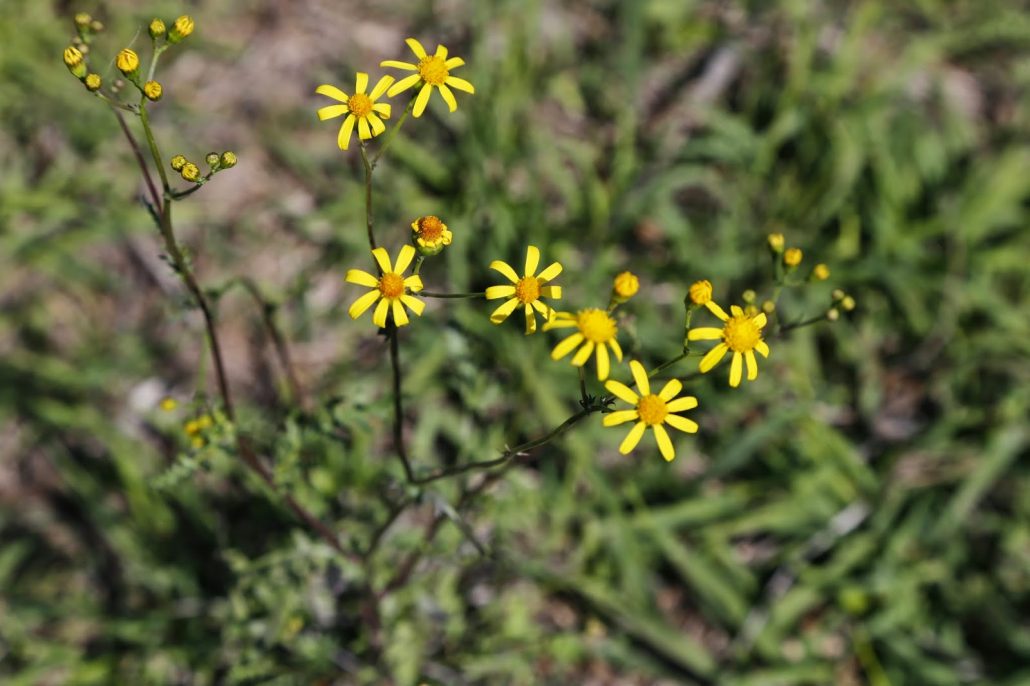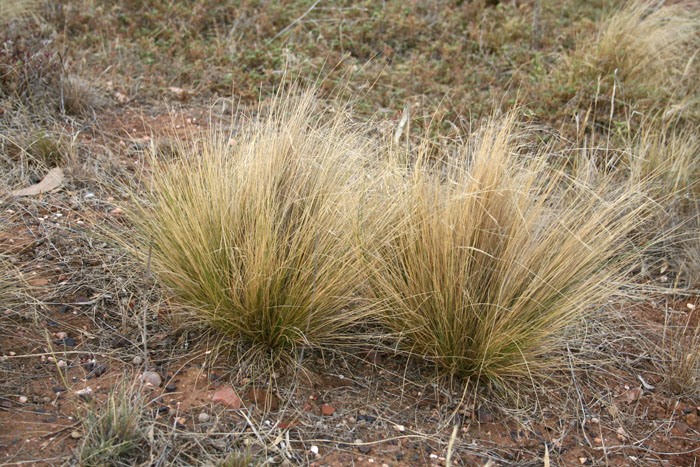Weed control during winter
The ideal time to control most weeds is when they are actively growing. This is usually in the warmer months. There are a few that can be controlled at any time of the year.
Two of those significant to this area are Serrated Tussock (Nassella trichotoma) and Cineraria (Cineraria lyratiformis). Both species are, unfortunately, common, and have adaptations for wind dispersal, but can also be spread by water, contaminated fodder, animals and vehicles.

Cineraria
Cinneraria has bright yellow flowers with eight petals which are borne in flat topped clusters at the ends of the branches. Mature leaves are oblong in shape and deeply divided. Juvenile leaves are small and rounded with soft serrations, somewhat similar to geraniums.
Cineraria is an annual plant that can grow and flower through winter. Being an annual, the root system is not very extensive and most plants can be pulled out.
This plant has the ability to produce seeds even if it is pulled out with young buds present. Therefore plants with any sign of a flower or bud must be bagged and later destroyed. At present there are no chemicals registered for Cineraria lyratiformis.
Cineraria is palatable to sheep and can be effectively controlled by confining a number of animals over an infestation. This plant is highly invasive and a dense perennial pasture is the best way of preventing seedling survival.

Serrated tussock
Serrated Tussock is a highly invasive perennial grass, which, if left untreated, can take only seven years to dominate a pasture or native grassland. It has virtually no grazing value due to a high fibre and low protein content.
The leaves of Serrated Tussock are very fin
e and when rolled between the index finger and thumb, roll smoothly – like a needle. In Autumn and Winter the leaves are a yellow-green, the tips of older leaves are often bleached by frost.
Isolated Serrated tussock plants can be dug up before flowering and turned upside down so no roots make contact with the soil. Fluproponate is the main chemical used in the control of Serrated Tussock. It is a residual chemical that will stop seedlings emerging for a period of about 2 years. Fluproponate is somewhat selective in that it will only kill certain types of grass. However, many of the grasses susceptible to Fluproponate are highly beneficial.
As with Cineraria a dense perennial pasture is the best way of preventing seedling survival.
Further information for identification of Cineraria can be found on the web, for example http://www.dpi.nsw.gov.au/biosecurity/weeds or http://plantnet.rbgsyd.nsw.gov.au.
There are also many good resources for Serrated Tussock on the web. However, Serrated Tussock as a grass is a lot more difficult to identify, and more importantly, to distinguish it from other similar species. A hands on approach is recommended. Watershed Landcare will be offering a short session to help landholders identify Serrated Tussock and other similar grasses at the Mudgee Small Farms Field Days in July.
